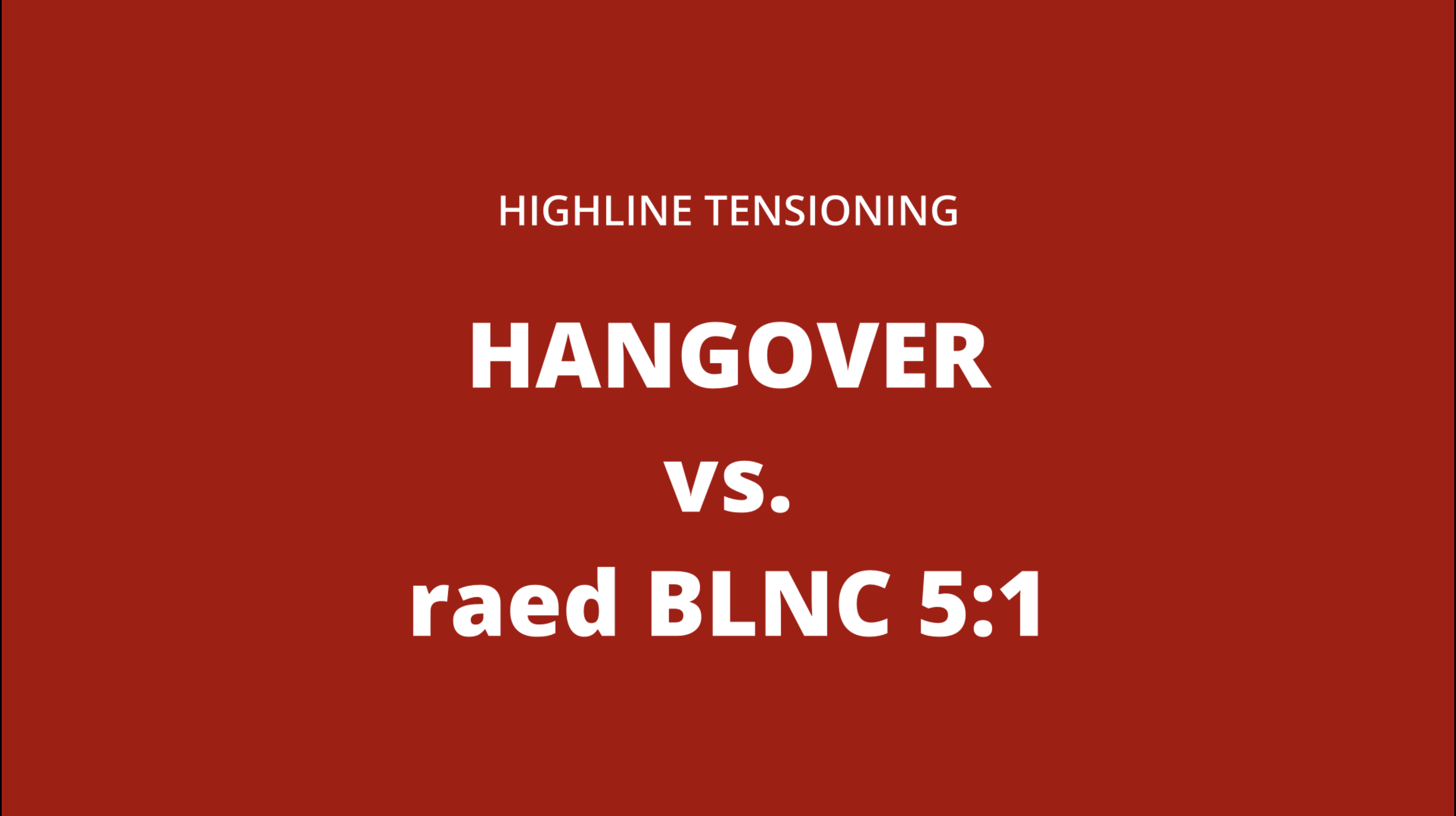☠️ WARNING: Knots in highline webbings ☠️

Frost Knots for anchoring backups - a WARNING
During the last years I talked to several rope access pros - one particular sentence came up again and again from these professionals: "If the safety of your rig depends on knot strength, you're doing it wrong"
There are several knots used in highline rigs, that are considered to be "safe knots". The double figure8 for tying the leash in to your harness, the double fisherman's for creating loops in rope anchors, the BFK in rope anchors and probably some more. None of these knots is as directly in the high load path as the "Frost Knot" which is widely used to connect the backup webbing to the anchor - mostly for one particular reason: To save a weblock, a.k.a. save some money and a little bit of weight. So this knot needs to be 100% safe, because our lifes as highliners absolutely depend on it.
What did we do?
Out of pure curiosity We regularly conducted frost knot tests in addition to regular gear tests. Since all other tests found their strongest results in frost knots with the load strand outside we focussed on exactly this knot. One day something strange happened: some results stayed FAR behind the expectations and the results from tests of other manufacturers and youtubers - a circumstance which highly aroused our curiosity even further.
What did we find?
We tested more than 60 frost knots in different slackline webbings. The most important lesson: We found massive deviations in the test results of frost knots in slackline webbing. We found frost knots in webbings breaking to severe destruction at 12 kN, which is only 33% of the webbing's MBS.
Why is this important for highliners?
All slackline manufacturers who are organized in the ISA and the broad highline community agreed to an absolute minimum for highline webbing safety: The ISA:41 safety standard for Highline Webbing and Highline Webbing Systems - subsection 3.3.4: Type C highline webbings. This absolute minimum in strength and safety regulates that a highline webbing needs a strength of at least 18 kN in the sewn termination to be safe for highlining. Anything below that value is considered unsafe and comes with the risk of a complete failure of the highline rig. So it's highly reasonable to also set the exaxt same bar for webbing termination knots in highline rigs. The problem: Not only a small fraction but MOST of the knots we tested achieved results way below that minimum threshhold. So it's safe to say: Frost knots in highline webbings are not safe - they are a huge risk to the highliners and should be avoided at any cost.
What about sleeved knots?
Slacktivity found a sleeved frost knot in polyester webbing that retained a strength of 98% - when talking about our very first results from frost knots tests the question immediately came up: what about sleeves? Is this a solution to this issue? So we also tested some sleeved frost knots - but the results were quite disappointing and just slightly above the 18 kN threshhold - we even found a sleeved frost knot to be weaker (!) than its unsleeved companion in the exact same webbing. We didn't conduct enough tests with sleeved knots yet to give a full recommendation about this but the first results also indicate a wide deviation in strength, so statistically it seems logical to assume there will also be knots with much weaker scores than the ones we found until now.
What do we recommend?
After conducting these tests and evaluating the results only one conclusion seems reasonable right now: The use of sewn loops and weblocks are the only known options to retain sufficient strength of slackline webbings in terminations. So we advise to not use any knots in the main load path of the webbing anymore.

 DEU
DEU





Validate your login
Sign In
Create New Account